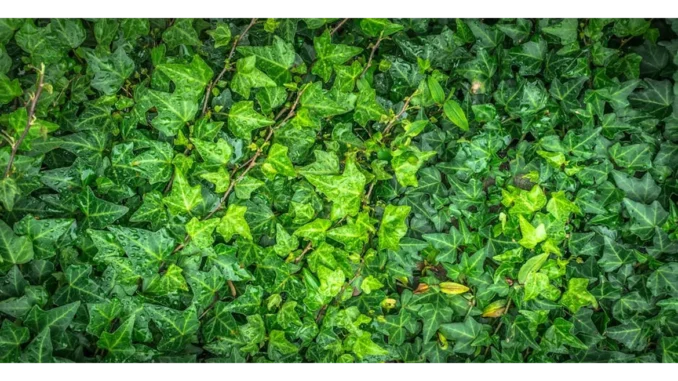
Transforming North-Facing Gardens: Expert Design Tips for a Vibrant Outdoor Space
North-facing gardens, often perceived as challenging due to their limited sunlight, can be transformed into stunning, functional spaces with thoughtful design and creativity. By leveraging expert advice and innovative strategies, you can create a vibrant and inviting garden that thrives in its unique conditions.
Leveraging Shade: Plant Selection and Placement
The key to a successful north-facing garden lies in selecting the right plants. Shade-tolerant plants such as ferns, hostas, and hydrangeas are ideal choices. These plants not only thrive in low-light conditions but also add texture and colour to your garden. However, don’t limit yourself to just shade-loving plants. Experiment with different species to see what works best in your specific garden conditions. Richard and Jacqui Drew, who have a beautifully designed north-facing garden, discovered that hardy geraniums and foxgloves thrived in their shaded space, adding unexpected bursts of colour.
Utilizing Vertical Space: Climbing Plants and Green Walls
In narrow north-facing gardens, vertical gardening can be particularly effective. Climbing plants like ivy can cover fences and walls, creating lush, green backdrops. Ivy, in particular, is well-suited for shady conditions and provides excellent shelter and food for wildlife. Richard and Jacqui’s ivy-covered fence not only enhances the garden’s aesthetic but also supports a variety of birds and insects, making their garden a haven for wildlife.
Creating a Cohesive Colour Scheme
To brighten up a shaded garden, use colour strategically. Richard and Jacqui used a soft blue-grey colour scheme for their garden accessories, including painted pavers, doors, and window frames. This cohesive palette creates a bright and inviting atmosphere, even on overcast days. Consider using marine paint for outdoor surfaces to ensure durability and longevity.
Sustainable Gardening Practices
Sustainability is crucial in modern garden design. Instead of paving over your garden, consider using gravel and pavers to allow rainwater to soak into the soil. This approach supports soil health and prevents runoff. Richard and Jacqui’s garden features a mix of gravel and pavers, which not only looks aesthetically pleasing but also promotes good drainage. Additionally, incorporating mini ponds and log piles can attract a variety of wildlife, enhancing the ecological value of your garden.
Blurring Boundaries: Creating a Sense of Space
To make a narrow garden feel larger, blur the boundaries with strategic planting. Trees and shrubs can draw the eye upwards and create a sense of depth. Richard and Jacqui planted fruit trees and hawthorn to blend their garden with the surrounding landscape, making it appear more expansive. Painting fences in dark colours can also help them recede into the background, further enhancing the illusion of space.
Seating Areas: Maximising Sunlight
Even in a north-facing garden, there will be spots that receive sunlight at different times of the day. Create multiple seating areas to take advantage of these sunny spots. Richard and Jacqui have several seating areas throughout their garden, allowing them to enjoy the sun whenever it appears. Adding bright cushions and throws can make these areas more inviting and comfortable.
Water Features: Enhancing Aesthetic and Ecological Value
Water features can add a tranquil element to your garden and attract wildlife. In a narrow, sloped garden, consider installing mini ponds instead of one large pond. Richard and Jacqui have several mini ponds, including some in oak barrels, which provide drinking and bathing spots for various creatures. These smaller water features are easier to manage and can be placed in different parts of the garden to create diverse habitats.
Practical Tips for Maintenance
Maintaining a north-facing garden requires some practical considerations. Since lawns may not thrive in shady conditions, consider alternatives like gravel or pavers. Richard and Jacqui replaced their lawn with gravel, creating a Mediterranean look that brightens the area. Additionally, pruning lower branches of taller trees can increase light levels without sacrificing the benefits of having trees.
Wildlife-Friendly Features
Creating a wildlife-friendly garden can be incredibly rewarding. Richard and Jacqui’s garden is a perfect example, featuring bug hotels, bat boxes, and bird feeders. These elements attract a variety of wildlife, from birds and bats to hedgehogs and insects. By incorporating similar features, you can create a garden that supports local biodiversity and provides a sanctuary for wildlife.
Conclusion
Designing a north-facing garden may come with its challenges, but with thoughtful planning and creativity, it can be transformed into a beautiful, functional space. By leveraging shade-tolerant plants, utilising vertical space, and incorporating sustainable practices, you can create a garden that is both inviting and ecologically valuable. With these expert tips, your north-facing garden can become a vibrant and thriving outdoor space.


Be the first to comment